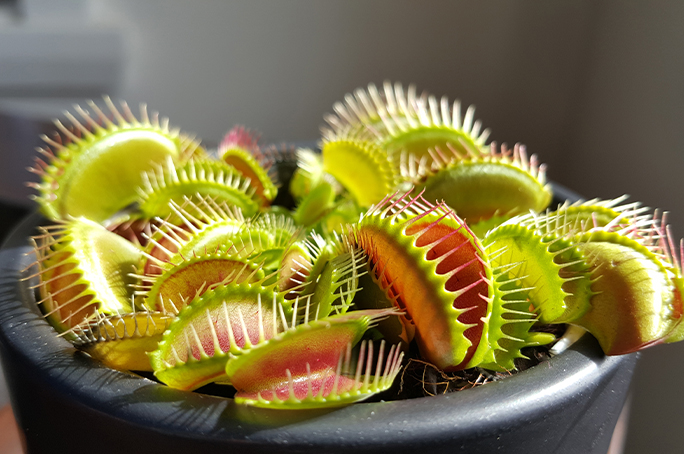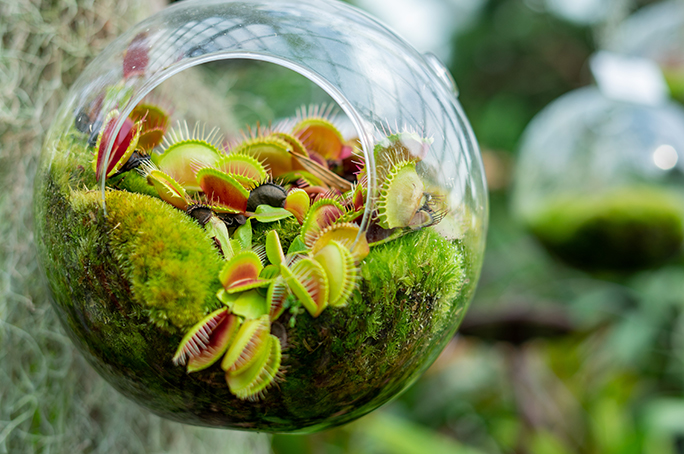Before buying any plant, it’s crucial to consider its natural conditions and think whether you’ll be able to provide it with adequate care. This is particularly important when bringing your first carnivorous plant home, as they can be pretty fussy and demanding. But worry no more—this comprehensive guide will help you provide your brutal greenery with just the right amount of love and care it needs!
Watering

Most carnivorous plants come from swamps and wet soils, so they require their potting mix to be constantly moist too. To make sure you don’t postpone a life-saving drink, check the topsoil with a fingertip and, once it’s dried by about 0.4 in (1 cm), water your green pet with distilled or rain water. Don’t use tap or filtered water, as it contains impurities, harmful for these sensitive species. When watering, moisten the soil well until water starts coming out of the drainage holes.
Sunlight

In general, carnivorous plants like to have about 3–5 hours of direct sunlight per day, and then bright, diffused light for the rest of the day. Yet, it’s always a good idea to research the specific needs of your particular species. For example, Dionaea muscipula enjoys bright and direct sunlight, while Nepenthes lilies may start drying out under excessive sun.
Temperature

Carnivorous plants don’t tolerate sudden temperature fluctuations and freezing weather, so it’s best to find them a cozy spot at 68–80°F (20–26°C) and protect your picky species from drafts, air conditioners, and heaters.
Some carnivorous plants, like Sarracenia and Dionaea muscipula, go dormant in winter. This is the time when you should adjust your care routine too—reduce the temperature to 55–60°F (13–15°C), slightly decrease the amount of light, and water less frequently.
Humidity

Carnivorous plants require high humidity of around 70%. To give them the best chance to thrive, consider growing them in terrariums or use a humidifier indoors.
Soil

Being unlucky enough to emerge in poor soils, carnivorous plants eventually came up with a unique way of barely needing it at all. Of course, they still use soil to root and absorb water from, but that’s it! All the nutrients they get actually come from above—these sneaky species learned to lure and eat insects.
With that being said, it’s no wonder carnivorous plants aren’t big fans of regular potting mixes, which are too nutritious for them. This is a case when less is more—a simple mix of perlite and peat in equal parts will be the best combo for your bug-eaters.
Nutrition

If the plant grows indoors and can’t attract insects on its own, lend it a helping hand! During the growing season (from early spring to fall), feed it with flies, mosquitoes, or little spiders, and make sure they’re alive for the trap to be able to catch it. One trap usually digests 1–3 insects and then dies—don’t worry when it happens, that’s a natural process. It takes about 3–4 weeks to fully process one bug; contrary to what it may seem, feeding the plant more often won’t make it grow faster but could end up harming or even killing it.
So, there you go with the basics of caring for carnivorous plants—not that hard, right? They might require some extra know-how from your side, but growing these strangely fascinating species is totally worth the hassle.
